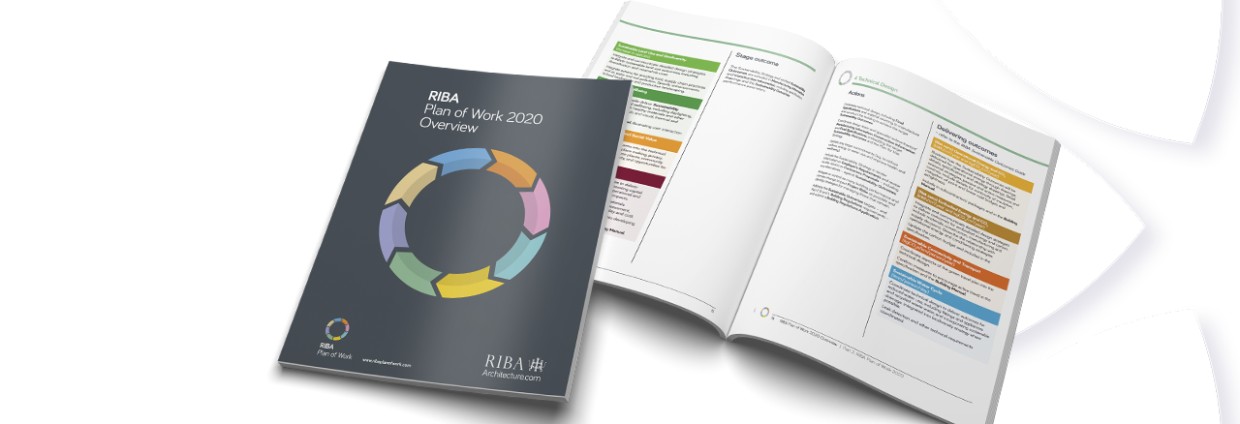
Construction Leader’s Summit 2024: Five Key Takeaways
16 October 2024
Discover the biggest topics at the Construction Leader’s Summit 2024 to stay ahead of the industr...
26 August 2020 | By Lee Jones
The RIBA Plan of Work, first developed in 1963, has become the standard for organizing construction projects. In 2013, RIBA Plan of Work had a complete overhaul, and again in 2020, significant changes have been made. Lee Jones, Head of Manufacturer Solutions, NBS, explains what those changes are, and how they impact construction product manufacturers.

The RIBA Plan of Work, first developed in 1963, breaks down the process of delivering a building project into eight stages, throughout the whole project timeline. It has certainly become the standard for organizing construction projects, and is used by all stakeholders involved in the project. In 2013, the Plan of Work saw a complete overhaul, including the move to numbered stages from the old lettered stages. The changes for 2020 are also significant. This article intends to explain what those changes are, and how they impact construction product manufacturers.
Seven years have passed since the last full update to the RIBA Plan of Work. In this time, we have seen ever-increasing demands for project collaboration, sustainability and safety throughout the building process – alongside the increased usage of BIM, which has since become the norm for many construction projects. The changes to the RIBA Plan of Work are intended to address those needs, and are the outcome of the developments in our industry and responses to user engagement.
The plan itself is set out in eight columns which define the project stage number, and five rows, which are taskbars. The stages are numbered from 0–7. Stage 0 is so numbered because this is where the project is merely defined. Stage 1 is where the project typically begins to develop and planning approval, etc. are sought. There are a number of changes to the stages in the 2020 update, although the most significant noted changes are at Stage 3. This is now referred to as ‘Spatial Planning’ (instead of its previous incarnation as ‘Developed Design’), where fire safety in spatial design is now at the forefront. Stage 5 is now also referred to as ‘Manufacturing and Construction’, previously just ‘Construction’. This is to recognize the ever-increasing use of off-site systems, or design for manufacture and assembly (DfMA).
The rows, or taskbars, clearly outline the required outcomes across each stage. Importantly though, they explain what information is to be exchanged at each point for best delivery. In a recent webinar by NBS, we covered what these are in depth. The webinar is available on demand here.
In respect of information exchanges, there is an increasingly greater requirement for these to be digital – something which was highlighted by the ‘Building a Safer Future’ report, and most recently the Government’s ‘Draft Building Safety Bill’. Digital records of information exchanged and held for projects will become mandatory in the not-so-distant future. In many cases, it is manufacturer’s products and systems information that underpin that information. NBS recently launched its new construction product manufacturer platform NBS Source, with the aim of helping manufacturers facilitate these requirements.
NBS Source provides the means for manufacturers to list their product information against the industry’s expected data templates in a digital format, whilst also allowing them to reach thousands of specifiers in a single place. For more information, visit www.theNBS.com/manufacturers.
Inspiration and knowledge. During the earlier stages of a project, typically Stages 0–2, designers will look for inspiration from other projects. For manufacturers, this is your opportunity to demonstrate your capabilities through literature and case studies. Being armed with high-quality online content in this area, which is readily available for designers to view, is important. NBS Source has a wealth of quality case studies and literature from various manufacturers, from which you yourselves can draw inspiration. Critically, also during these stages, specifiers will need to learn how various solutions and processes work. This is aligned to the need for architects to complete 35 hours/ 100 points of CPD per year. Manufacturer CPD provision is a huge benefit that gets you face to face with the specifiers. As an RIBA-related company, NBS provides the platform ribacpd.com. All RIBA CPDs are accredited by the RIBA, which ensures the highest quality delivery and provides attendees with double points. Today, there is obvious demand for CPDs to be delivered online. Many specifiers are still working remotely, and manufacturers need to consider this when embarking upon CPD. NBS can talk you through the ins and outs of these points if you would like to learn more.
Product Information. At Stage 3, the project design really starts to develop. For manufacturers, this means two things. Firstly, your product data starts to become critical for those information exchanges noted above. Having things like your Declaration of Performance, certification and sustainability data (to name a few items) is imperative for specifiers to include your products on their projects. Again, this is expected to be provided digitally in today’s industry. At Stage 4, the main goal of the project is to finalize the specification. That same manufacturer data is again used, but aligned to specification clause templates. NBS Source provides manufacturers with the ability to satisfy all of these requirements. For more information, please visit www.thenbs.com/manufacturers. Stages 5–7 will see things such as your installation, warranty and maintenance data being utilized.
Geometry. Lastly, we are seeing many projects being created using BIM – in the same way that stencils were provided pre-1990s, and then CAD files in the past couple of decades. BIM content will help place your products directly into the designed model. This further backs up your potential for specification. Part of the forthcoming industry legislation changes will require the model and spec to be fully aligned. This is something that we at NBS refer to as the ‘triple lock’. Make your product data usable, get in the spec and get in the model – all of which will be synched together. NBS Chorus, our online specification tool, allows designers to facilitate this synchronization via the plug-ins that we developed for all of the top BIM design software, and also our BIM content provision. Furthermore, NBS Chorus is a true collaborative tool – where you, as the manufacturer, can actually be invited in to write your element of the specification with the specifier.
In short, manufacturers play a critical role across all of the stages of the RIBA Plan of Work. Your expertise in your field is unrivalled, and is in demand from specifiers and designers to enable them to continually evolve and produce better, safer and more sustainable projects. The above guidance, if followed, will certainly help you on your journey to get specified and win more orders. NBS has been at the forefront of specification for 50 years, and with our latest cloud-based tools NBS Source and NBS Chorus, we have an unrivalled platform to place manufacturers in sight of specifiers, and to get their products into their projects. For more information, or to request a demo of NBS’ provisions, drop us a line at manufacturers@thenbs.com or visit www.thenbs.com/manufacturers for more details.